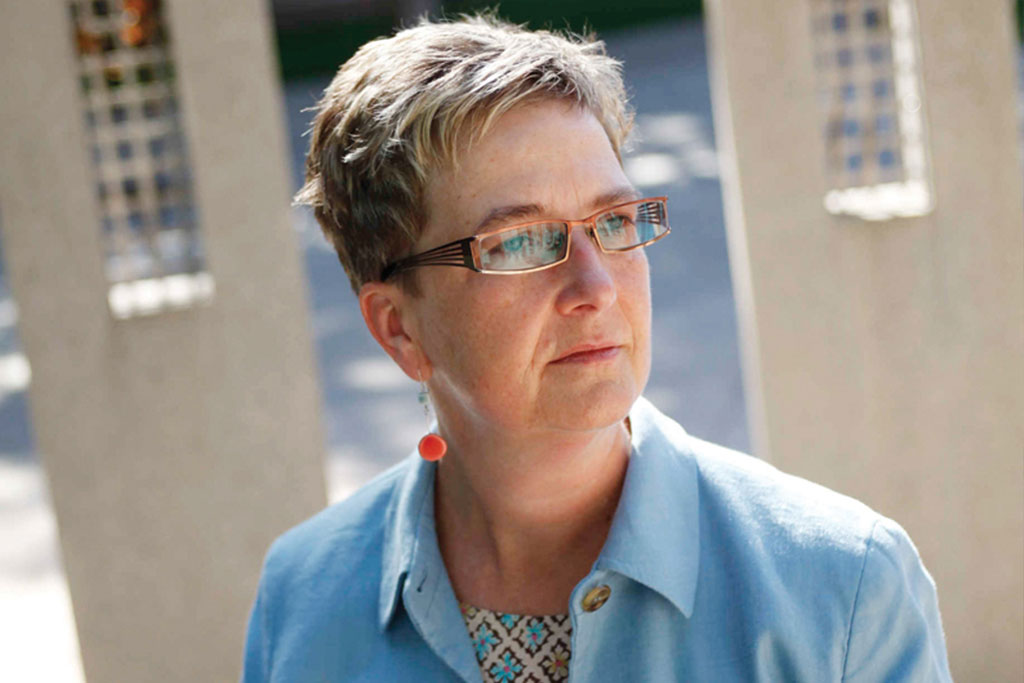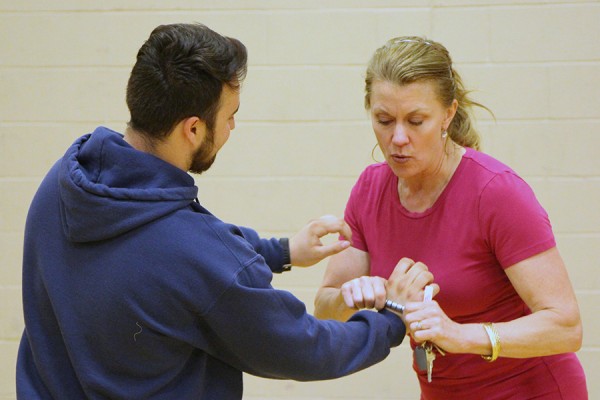 UWindsor Professor Charlene Senn is the new Canada Research Chair in Sexual Violence, the Government of Canada announced.
UWindsor Professor Charlene Senn is the new Canada Research Chair in Sexual Violence, the Government of Canada announced.
Charlene Senn’s goal is to empower women.
The University of Windsor professor has devoted her professional life to arming women with the knowledge and tools they need to better protect themselves against sexual violence without limiting their freedom.
And it’s that work that has led to her appointment as the Canada Research Chair in this field of study.
“During my undergraduate degree I really didn’t know what I was going to do and had always thought about careers like medicine or dentistry,” Dr. Senn said.
“But as I took more courses, and experienced things in my own life, I became more politically and socially interested in working on issues related to violence against woman.”
Senn’s first job after her Bachelor of Science degree at the University of Calgary was at the Calgary Women’s Emergency Shelter. There she worked on the frontline of crisis counselling for women escaping violence.
“When talking to these women, sexual abuse or sexual assault usually came up much later in the process,” Senn said.
“In some ways, it’s easier to talk about physical assaults when you can point to a bruise, but the other stuff takes longer to be comfortable talking about.”
Senn’s first foray into research was through studying the impact of pornography on women’s lives.
She said a lot of the existing research had focused on pornography’s effect on men and their callousness towards women.
“A lot of the women I talked to were talking about something much more immediate,” Senn said.
“They were being forced to watch it and their sexual abuse was being turned into pornography.
“I realized that this is research that didn’t exist and was something that needed to be done.”
Senn started her master’s degree in experimental psychology at the University of Calgary where she conducted a study that identified that there were negative effects of viewing pornography for women due to the dehumanizing and violent content of the images.
After pursuing this research during her doctorate at York University, Senn said many presumed she was pro-censorship or opposed to sexual imagery because she was anti-pornography, neither of which was the case.
“And so, I started to do research on sexual assault more generally,” Senn said.
“At first it was on predictors of men’s sexual coercion and then eventually that grew into what my current research is.”
Senn said she became interested in going beyond identifying problems and describing them, but instead actively working to develop solutions.
“I was looking at research on prevention programs for men but basically the effectiveness seemed far away,” Senn said.
“And so, it made sense to me that if we don’t have a solution yet for how to stop men from perpetrating, we could educate women with information that could help them in those situations.”

Dr. Charlene Senn is now looking to expand the Enhanced Assess, Acknowledge, Act program on campuses across North America and around the world.
Using theories and evidence synthesized by other prominent sexual violence researchers Patricia Rozee and Mary Koss, Senn developed a sexual assault resistance education program for women in the first year of university when their risk is the highest.
Senn’s Enhanced Assess, Acknowledge, Act (EAAA) program affirms men’s responsibility to stop rape while empowering female students with knowledge and skills to fight back against men’s sexualized violence.
She said the goal was to empower women to trust themselves and their sense that something was going wrong in an interaction and take action to defend their sexual rights. In new or established sexual relationships, the program had a second goal, to empower women to be an equal sexual partner whose desires matter so that they are knowledgeable about their own relationship and sexual values and are able to initiate sex if they want. Senn said this also has benefits for resisting sexual coercion.
“The surer you are of your own sexual desires and values, the quicker you will be able to identify when someone is pressuring you to do something you’re not comfortable with.”
The effectiveness of this program was demonstrated in a Canadian Institutes of Health Research-funded randomized controlled trial in which the one-year incidence of attempted and completed rape was reduced by 50 per cent in women who took the intervention compared to the control group.
Senn’s research now focuses on studying and enhancing the effectiveness and implementation of the EAAA as it is rolled out on campuses across North America and around the world.
A post-doctoral fellow will be joining Senn’s team to fully adapt the EAAA program for younger girls in high school and in the community.
“We are already working in collaboration with scholars in the U.S. and New Zealand,” Senn said.
“We’re now changing some of the scenarios in the program to cater them specifically for these groups.”
And while the results from the program demonstrate its effectiveness, Senn said hearing from participants emphasizes its importance.
“A young woman who identified as a rape survivor in Calgary wrote to me to say this program had given her freedom back,” Senn said.
“It’s about looking forward, not looking back, and moving onwards with confidence.”
Senn hopes that her research, in combination with efforts of other researchers, activists, and educators, will contribute to the goal of ending violence against women and girls.
By Dylan Kristy







